African Turquoise Beads for Growth, Balance, and Timeless Beauty
Discover the Power and Elegance of African Turquoise Beads
African Turquoise Beads blend earthy sophistication with vibrant energy. Although called “turquoise,” they are a form of African jasper that displays an alluring teal-to-green hue with natural brown or black matrix veins. Known as the Stone of Evolution, they symbolize growth, transformation, and renewal. Whether used for bracelets, malas, or statement necklaces, African Turquoise Beads bring grounding calmness and a touch of exotic elegance to any jewelry piece. Many shoppers also search ‘african turquoise beads meaning’ when exploring the stone’s symbolism of growth and transformation.
The Natural Beauty of African Jasper
Unique color tones that inspire creativity
Each bead varies from soft aqua to mossy green, crossed by intricate web-like matrix lines. This organic look gives designers freedom to combine natural serenity with a bold modern edge. When polished, African Turquoise Beads reveal a soft sheen that makes each strand feel alive.
I once matched these beads with brushed silver spacers—customers loved the contrast and the sense of calm it radiated.
Visual texture and balanced presence
The texture appears ancient yet contemporary. Against skin tones, the color shifts slightly, making the piece seem personal and adaptive. The mix of shades pairs beautifully with Native American Turquoise beads or Arizona Turquoise Beads for layered designs.
Perfect combinations for distinct style
Combine with bronze, copper, or sandalwood for warmth, or add onyx for depth. Designers seeking shimmer may contrast with turquoise glass beads. For commercial buyers, keywords like “Turquoise Beads real” or “real turquoise beads wholesale” help locate suppliers, while hobbyists often search “Genuine turquoise beads for jewelry making” to ensure authenticity. Collectors comparing light and Dark Turquoise beads often notice how African varieties carry warmer earthy undertones.
See how African Turquoise Beads shine in real-life jewelry creations.
Specifications, Sizes, and Design Options
Standard bead diameters for any design
Available in 4mm, 6mm, 8mm, 10mm, and 12mm, African Turquoise Beads fit both minimalist and statement jewelry. Smaller sizes complement thin wrists or layered bracelets; larger beads enhance bold necklaces.
Stringing and craftsmanship
Use elastic for casual bracelets, or 49-strand steel wire for premium strength. Hand-knotting on silk increases fluidity and elevates the final look. Each polished bead carries a cool weight that quickly warms to the touch.
When I first handled a 10mm strand, the cool surface against my skin gave a reassuring steadiness—I knew it would be a customer favorite.
Aesthetic and tactile harmony
A well-strung bracelet drapes naturally and feels balanced. Proper spacing (1–2 mm) between beads highlights the matrix lines and prevents friction wear, keeping your African Turquoise Beads pristine for years.
Energetic and Emotional Benefits
Stone of evolution and self-discovery
African Turquoise is said to awaken inner confidence and help embrace change. It strengthens intuition and aligns with the throat and third-eye chakras, encouraging clarity and expression.
Emotional stability and mental clarity
Wearing African Turquoise Beads helps calm anxiety and promotes emotional balance. The cool green tone reflects stability and self-assurance, helping you focus on steady personal growth.
Spiritual grounding and motivation
Linked with renewal, this stone supports creativity and motivation. Artists and entrepreneurs often wear it to stimulate inspiration while staying grounded.
During my studio work, I wore an African Turquoise bracelet daily—it reminded me to stay patient while my designs evolved.
Price, Value, and Quality Factors
Grading and visual quality
Market grades include A, AB+, and color-enhanced forms. A-grade stones show pure blue-green tone and minimal yellow spots; AB+ beads feature darker greens and irregular specks. Color-treated versions mimic AB+ but display more black dots. The richer and more uniform the color, the higher the value.
Factors influencing price
Pricing depends on color intensity, polish, uniform drilling, and origin. Consistent patterning and smooth luster raise demand. For bulk buyers, African Turquoise Beads maintain excellent value because even mid-grade lots show impressive beauty.
Authentic sourcing practices
Choose reputable sellers with grading disclosure. Avoid artificial coatings or dyed imitations. Documentation adds confidence for artisans and collectors alike.
Authenticity and Real Stone Recognition
Natural variations prove genuineness
Authentic African Turquoise has irregular matrix lines and non-repetitive spots. Perfect uniformity often signals imitation. Real stones display micro-grainy texture under magnification and subtle coolness to touch.
Simple home tests and indicators
Real African Turquoise does not stick to a magnet and should not bleed color when wet. The tongue test shows faint adhesion, while fake resin feels slick. Avoid ultrasonic cleaning and harsh chemicals.
Professional evaluation for collectors
For premium orders, request certificates or laboratory identification. True African Turquoise Beads will show mineral consistency and stability not found in plastic substitutes.
Zodiac, Wearing Habits, and Care
Zodiac compatibility and symbolism
African Turquoise resonates with Sagittarius, Capricorn, and Scorpio, supporting transformation and wisdom. The balanced energy of this jasper helps these signs remain adaptable and calm during life shifts.
How to wear and maintain
Wear on either wrist depending on intention—right for activity, left for calm. Remove before bathing or swimming to protect polish and string integrity. The stone is not magnet-reactive and can be cleansed with a soft dry cloth.
Sleep and water considerations
Although durable, avoid sleeping in tight stacks or prolonged soaking. When turquoise gets wet, its porous structure may absorb residue and dull over time. Gentle handling ensures the beads’ long-lasting luster.
My Experience
-
I’ve handled many variations—A-grade with pure teal, AB+ with yellow patches, and dyed versions showing black specks; each behaves differently in light and polish.
-
Market demand favors round beads, tumbled chips, abacus cuts, and column shapes; customers love the natural contrast and texture.
-
My clients often purchase 1,000-piece lots of bracelets or strands, later weaving them into handmade malas and crafts that show the full charm of African Turquoise Beads.
-
Compared with Blue Calcite Beads or Caribbean Blue Calcite Beads, African Turquoise gives stronger motivational energy—ideal for anyone seeking progress and renewal.
FAQ
Where is African turquoise found?
It’s primarily mined across several regions of Africa, especially in South Africa and Namibia, known for jasper deposits resembling turquoise.
Is African turquoise dyed?
Some lower grades may be enhanced for stronger color, but authentic A-grade material is natural jasper with no dyeing.
What is the rarest color of turquoise?
Pure, vivid blue-green with minimal matrix is rarest and most desirable among both turquoise and African variants.
What are the benefits of wearing African turquoise?
It supports emotional stability, motivation, and personal growth, helping the wearer adapt to change with optimism.
Who should not wear turquoise stone?
People overly sensitive to energy shifts or under astrological conflict may prefer grounding stones like jasper or agate instead.

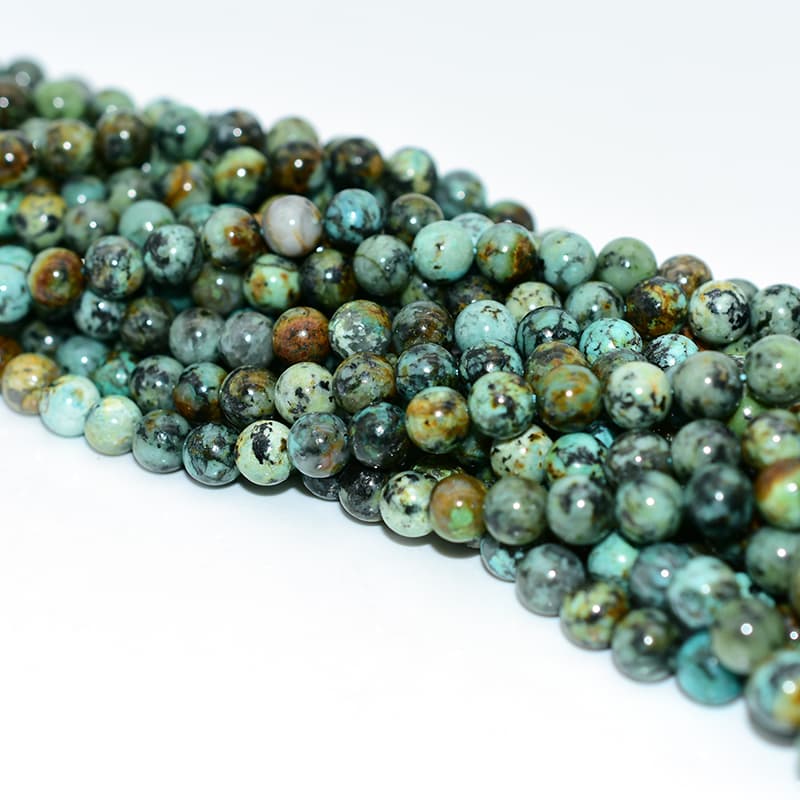
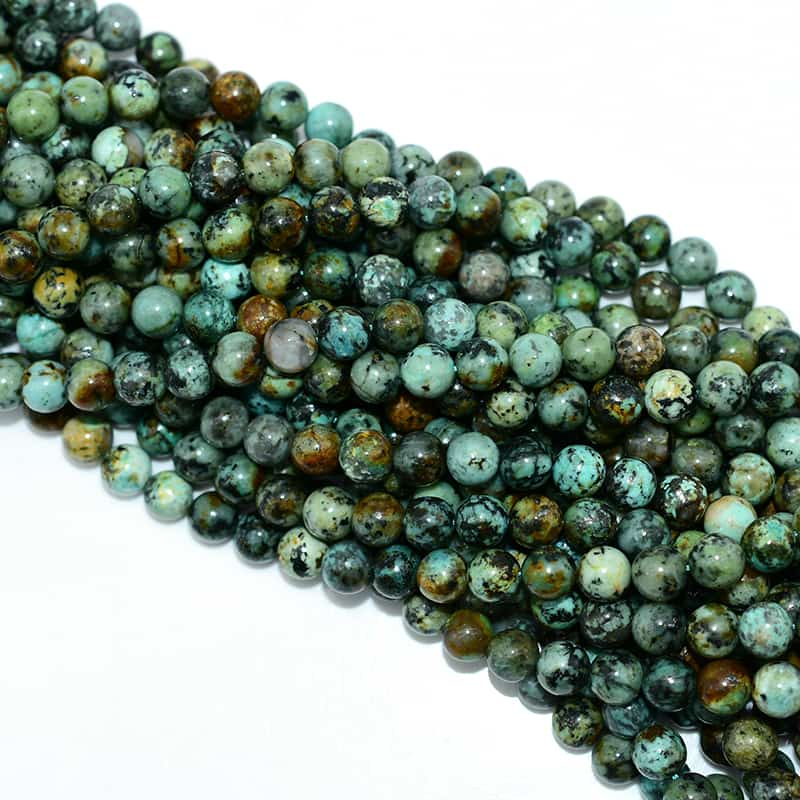
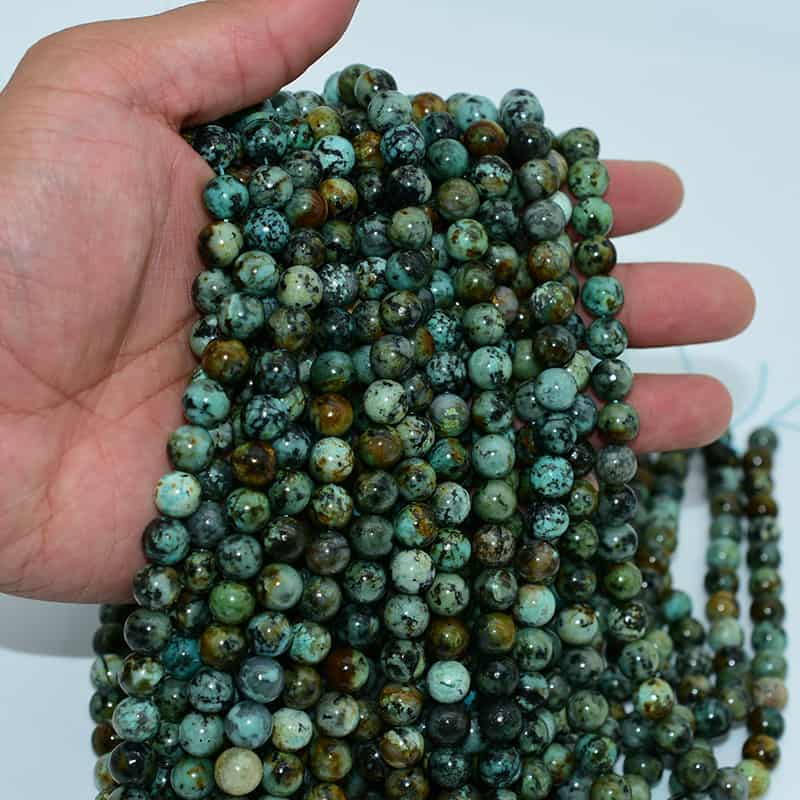
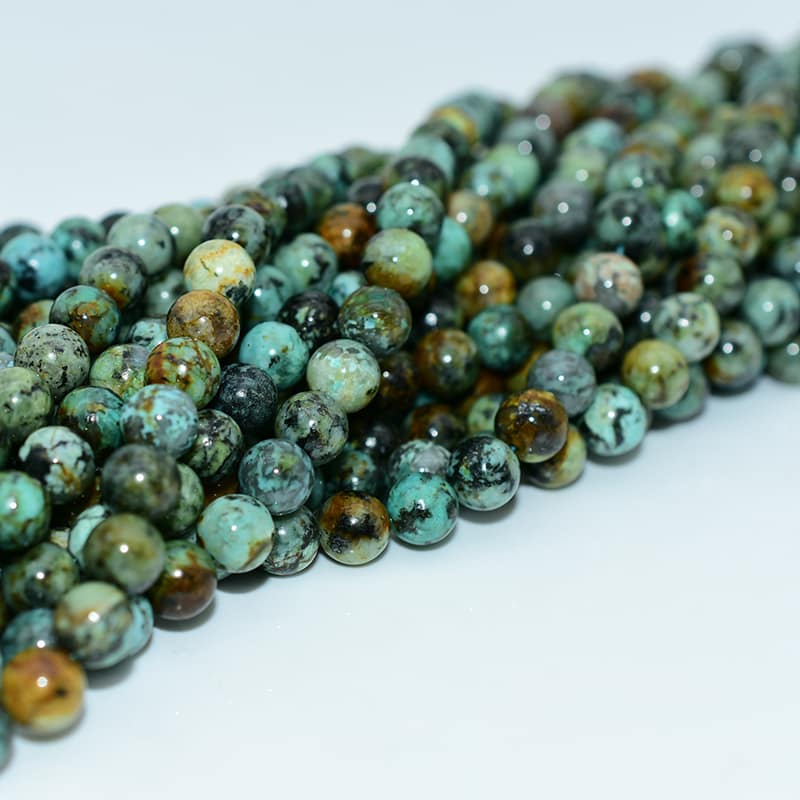


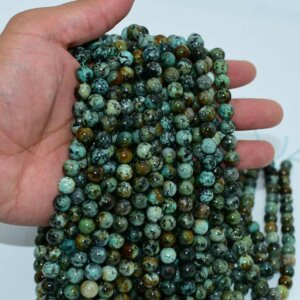


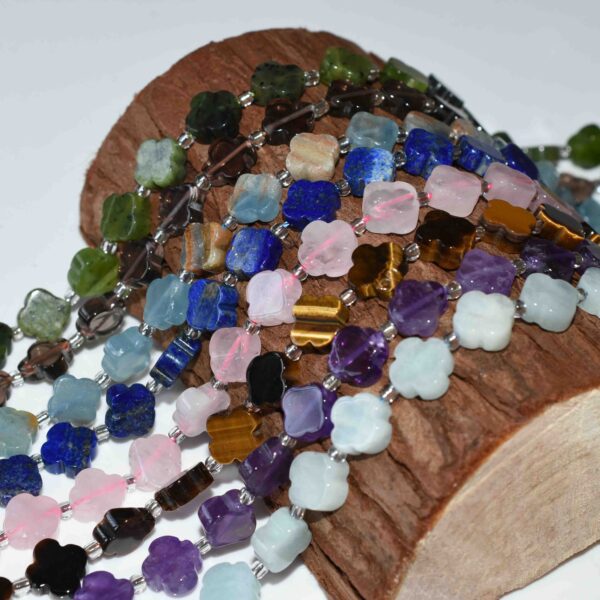
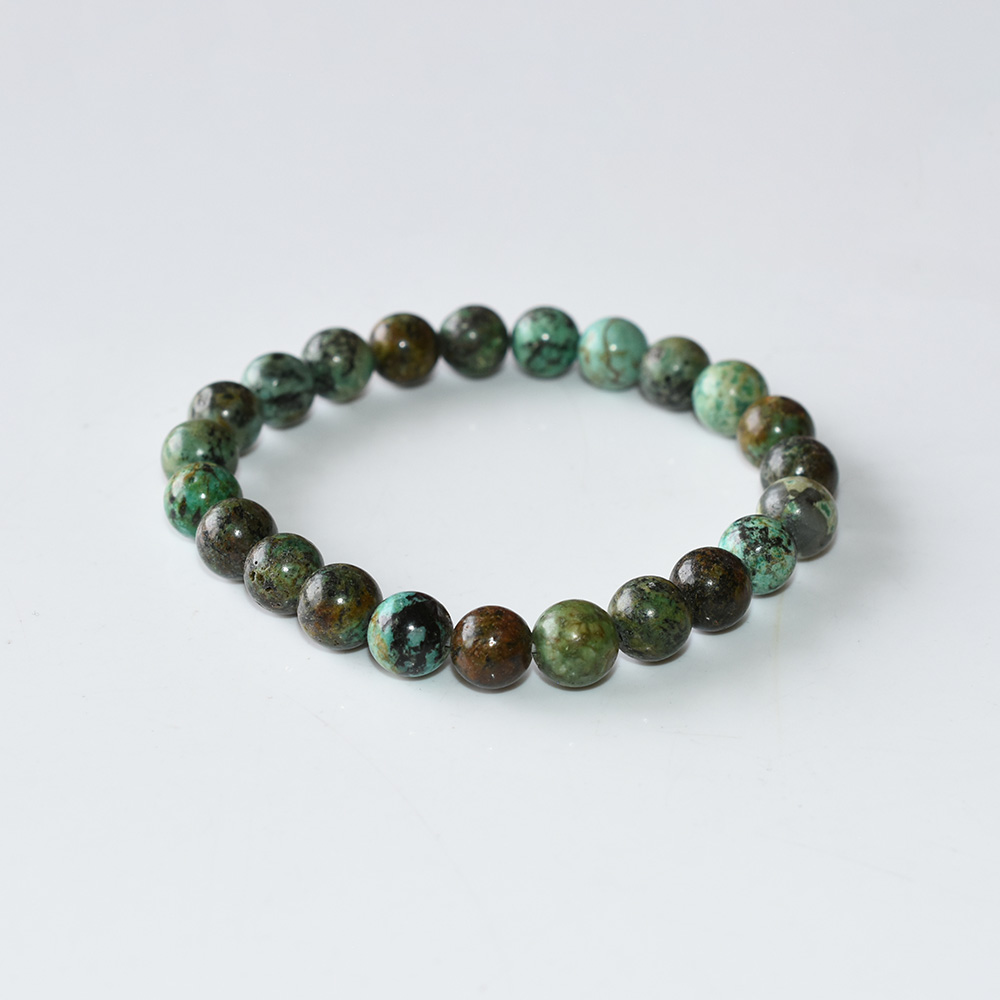
Reviews
There are no reviews yet.